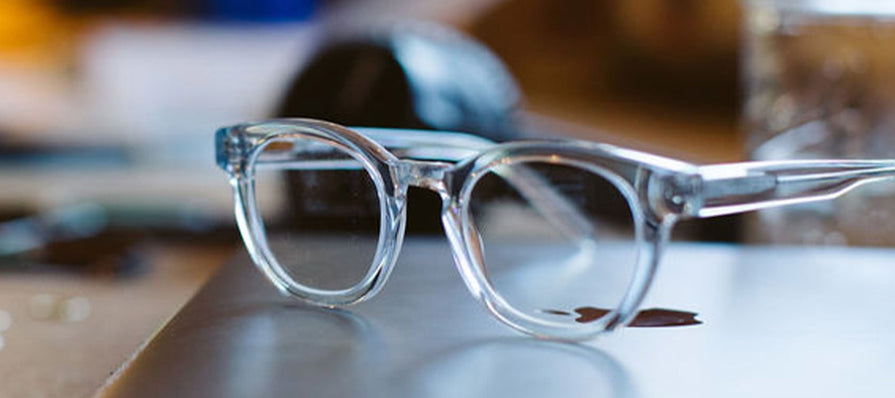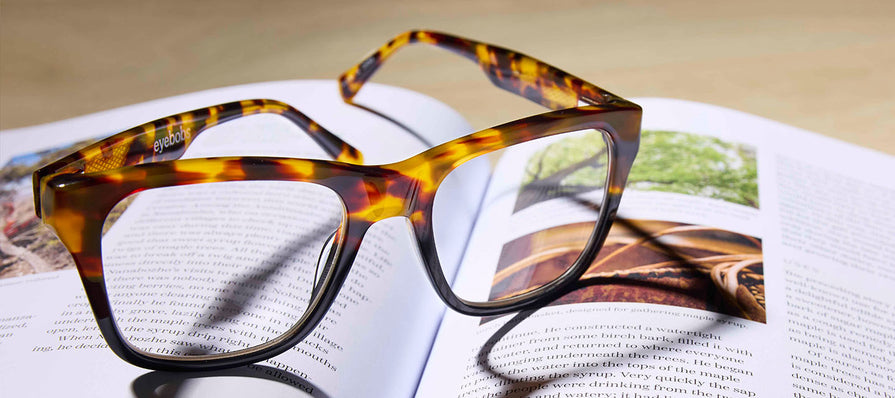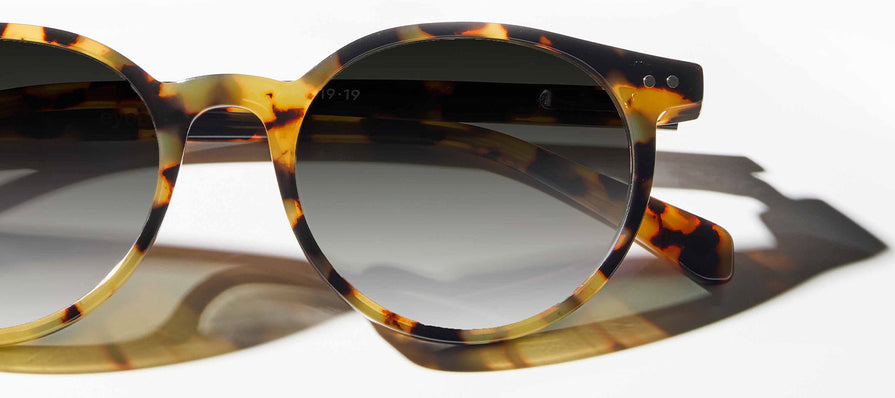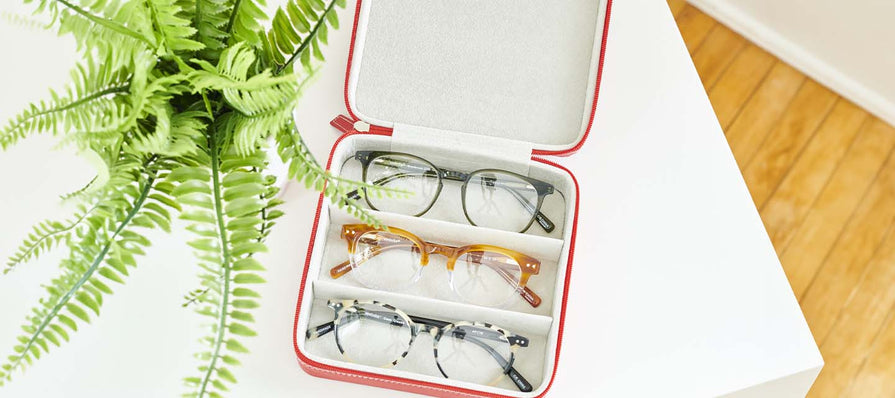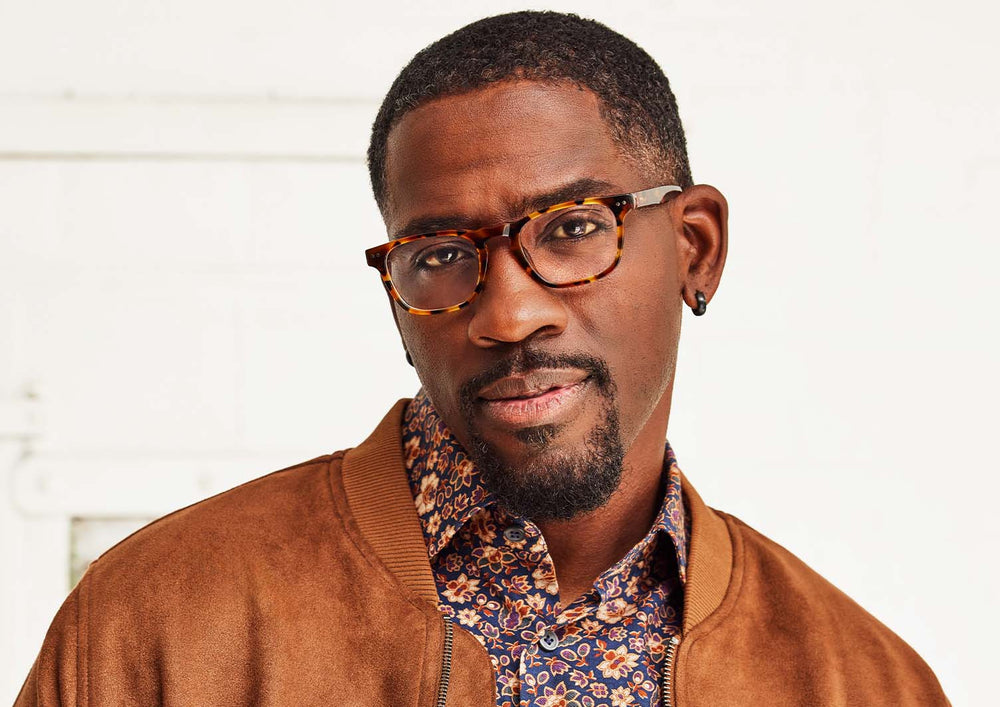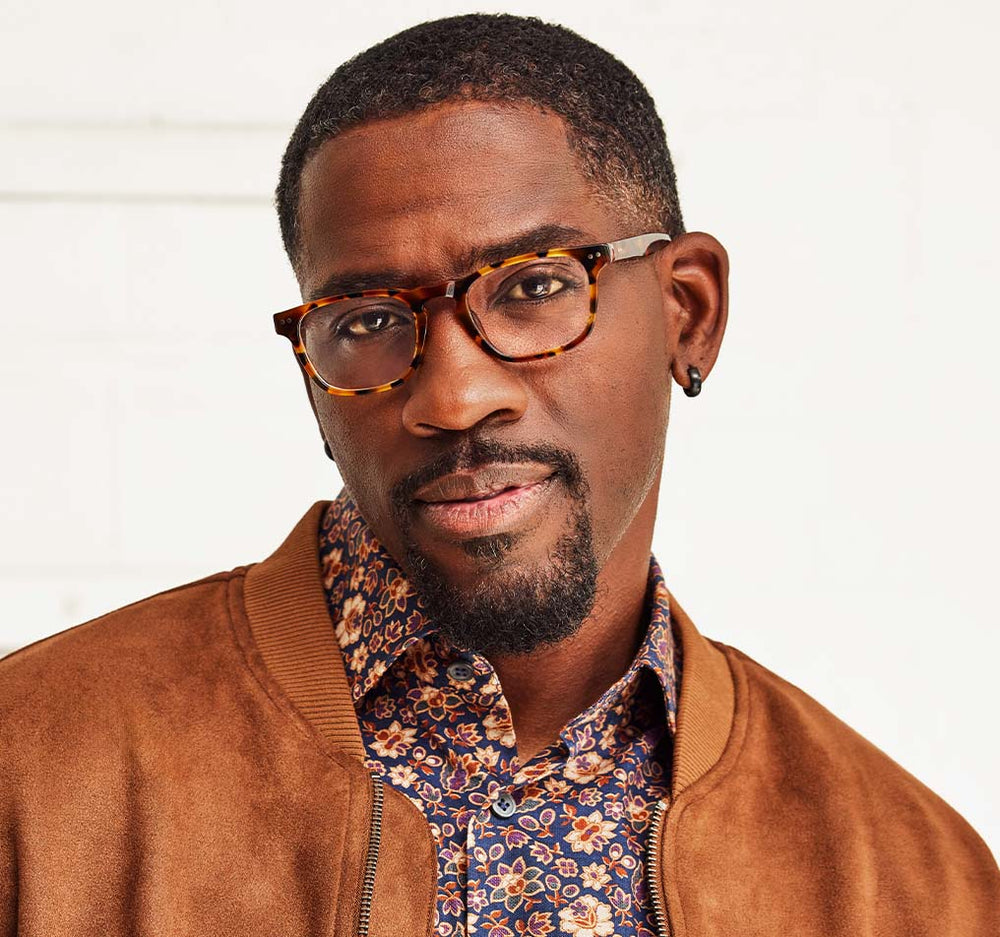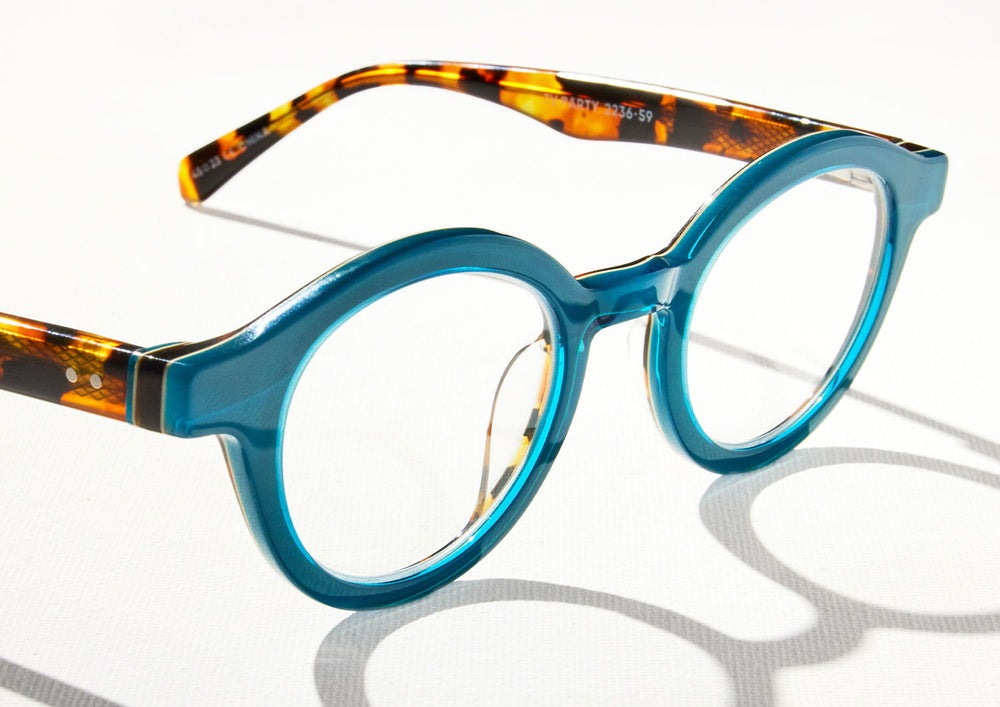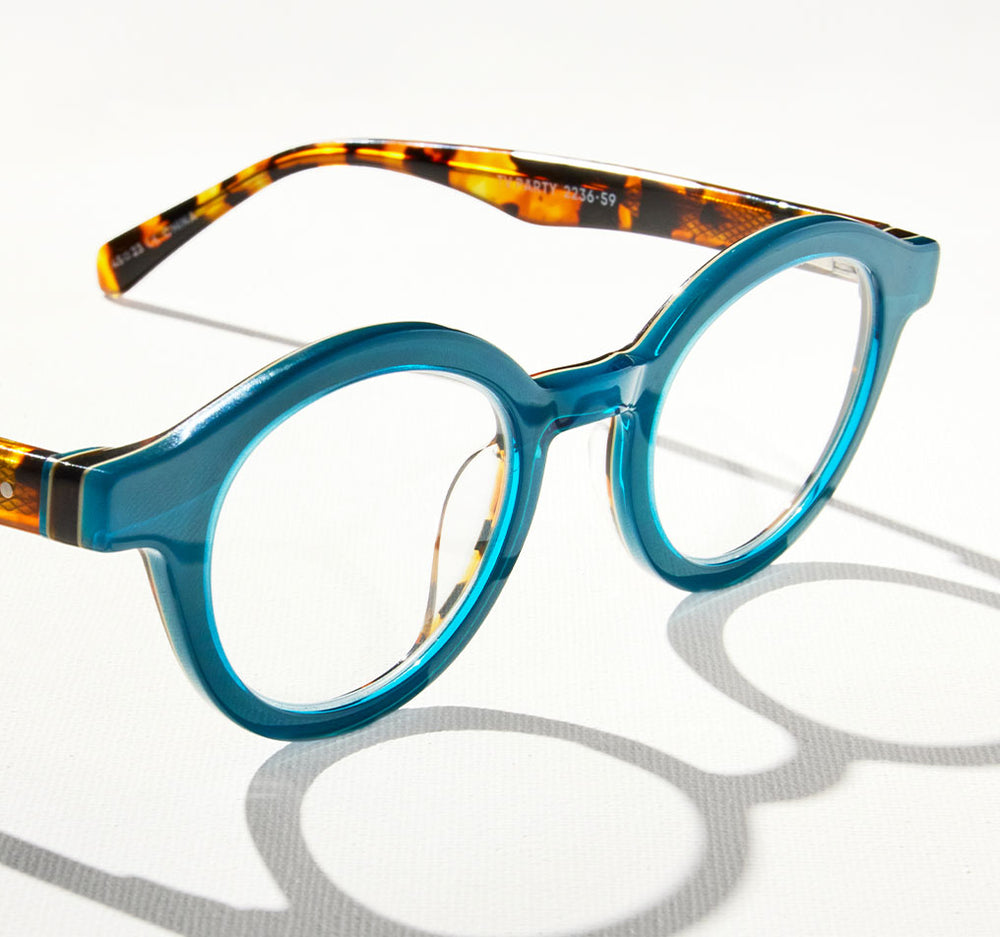May isn’t just the month that ushers in margaritas (we see you Cinco de Mayo) and questionable tan lines (helloooo, vacation!) – it’s also Healthy Vision Month, which means it’s a good time to look back at those two little all-important windows to the soul. While you’re spring-cleaning your wardrobe and basking in longer daylight hours, pause for a moment to give your frames and your eye care routine a once-over. Is everything up to snuff?
In classic eyebobs fashion, we’re breaking down everything you need to know about keeping your vision sharp and your specs in check. From how often you should really be replacing your glasses to the weird-but-true ways you might be straining your eyes without realizing it, this is your just-the-right-amount-of-nonsense guide to treating those peepers the way they deserve, this month and all the months to come.
So, What Is Healthy Vision Month?
First launched by the National Eye Institute, Healthy Vision Month is observed every May to promote eye health, raise awareness of preventable vision problems, and remind you that yes, you really should schedule that eye exam you’ve been putting off since 2019.
From making sure your lenses are protecting your eyes in all the ways that matter to finally upgrading those scratched-to-heck readers you’ve been pretending are fine, there are plenty of ways to show your eyes a little extra love this May and beyond. It’s not just about 20/20 vision – it’s about your the health of your eyes and quality of sight. Read on to see what we mean – and if you can’t, make your font size bigger and read on anyway, because you especially need to hear it.
How Often Should You Replace Your Glasses?
Glad you asked. Short answer: It depends. Slightly longer answer: if your lenses have more fingerprints than a crime scene, or you’re reading your phone like it’s an ancient scroll, it might be time.
Here are a few signs your glasses are ready to retire gracefully.
-
You’re squinting...again. If text appears fuzzy, lights appear to have a soft-focus like a ‘70s music video, or you’re getting headaches like it’s a hobby, your prescription probably needs an update. And that’s okay – your eyes change over time. Your glasses should keep up.
-
Wear and tear. Scratches on your lenses? Loose arms? Wonky bridge? If your glasses are looking like they barely survived a bar fight, an upgrade is in order. Even if your prescription hasn’t changed, worn-out glasses can impair your visual clarity.
-
You’re seeing double. Lens coatings break down over time, and when that anti-reflective magic starts to fade, your eyes pay the price. If you’re dealing with glare, halos, or fogginess, that’s probably your lenses sending up a white flag.
-
You want something new. Very valid. If your frames just don’t match your vibe anymore, that’s the only excuse you need.
Rule of thumb: If it’s been two years or more since your last new pair, it’s time to take a good look at leveling up.
How Often Should You Get an Eye Exam?
Okay, we’re not here to lecture you, but this is the part where we’re going to make you think about when you last laid eyes on your optometrist. You wouldn’t drive a car for years without an oil change (we hope), so make sure you’re giving the same consideration to your most vital tool of all: your eyes, of course.
The American Optometric Association recommends:
-
Adults aged 18-64 should get an eye exam every 2 years.
-
Adults aged 65 and up should get an eye exam every year.
-
Anyone with glasses, contacts, or eye conditions should get an eye exam every year.
Why so frequent? Because your eyes are constantly evolving. An annual checkup ensures your prescription stays sharp and screens for issues like glaucoma, cataracts, and macular degeneration (oh my!) before they become major problems.
Tips for Protecting Your Eyes from Strain
Let’s talk about the comic book villain of vision: eye strain. Whether it’s from staring at your laptop, squinting in the sun, or refusing to blink during a Netflix binge, here’s how to fight back (and win).
-
Follow the 20-20-20 Rule: Every 20 minutes, look at something 20 feet away for 20 seconds. It sounds made up, but it works – it’s basically like a stretch break for your eyeballs.
-
Wear Blue Light Glasses: Especially if you’re staring at a screen for 8+ hours a day, trust us: you need these. Although the science is still developing, blue light lenses help filter out the artificial glow and help reduce fatigue and dryness, symptoms related to digital eye strain. Adjusting your screen’s brightness settings to match your environment can also make a big difference.
-
Make Sure Your Sunnies are UV-Proof: You need sunglasses with built-in UV protection, even on cloudy days. UV damage is sneaky and accumulative, like your inbox when Karen from accounting won’t stop spamming you after hours.
-
Adjust Your Lighting: Avoid working in harsh fluorescent lighting or dark dungeons (like your bedroom with all the blinds closed). If you’re working in a traditional office, those blinding overhead LEDs are going to be tough to avoid; luckily, blue light blockers can help with those too. Or, maybe you could get your cubicle mates to go in on some nice ambient lamps. It’s worth a shot.
-
Blink. No, Really: Staring at screens makes us blink less, drying out our eyes. Consciously blinking more often can keep your eyes happy and hydrated. There’s also no shame in the drop game if you need a little extra help. Just don’t go overboard – using eye drops too much can actually have the opposite of the desired effect, potentially leading to drier eyes once the drops’ effects wear off. And that would certainly be a drag.
Tips for Preventing Physical Eye Injuries
Your current frames might be good-looking, but are they actually protecting your eyes when it counts? (If they’re eyebobs, you already know the answer. Yes, they are.)
Here are a few times you should definitely be wearing protection. Eye protection, that is – what did you think we meant?
-
During Home Projects: Drilling, sanding, sawing, hammering – you know, all the things that send tiny particles flying at your face. Perhaps throwing on some safety glasses might be prudent? You can thank us later.
-
While Playing Sports: Especially anything involving balls, racquets, or rogue elbows.
-
At Work: If you work in a lab, on a construction site, or in any job where eye hazards are a risk, make sure your eyewear meets safety standards and actually fits your face.
Protective eyewear isn’t overkill – it’s just smart. And we know you are, too.
Eat (and Supplement) for Your Sight
Yep, that elementary wisdom was at least a little on the money: your diet can affect your vision. It’s not quite as simple as “a carrot a day keeps the optometrist away,” but science tells us that certain nutrients do indeed support eye health.
Here’s what to eat to keep your eyes strong.
-
Leafy greens like spinach, kale, and collards are packed with lutein and zeaxanthin, antioxidants that help filter harmful blue light and reduce the risk of macular degeneration.
-
Citrus fruits and berries contain Vitamin C, which can reduce the risk of cataracts and slow macular degeneration.
-
Nuts and seeds are rich in vitamin E and omega-3s, known to protect eye cells from damage.
-
Sweet potatoes and carrots contain beta carotene, which helps protect eyes from stress and reduces the risk of eye diseases.
-
Fish like salmon, tuna, and mackerel are loaded with omega-3 fatty acids, which help prevent dry eyes and support retinal health.,
You may also want to consider supplements if these foods don’t pop up in your diet very often, especially if you’re over the age of 40 or have a family history of vision issues. Look into Vitamin D, fish oil, or an AREDS2 formula that contains all the good stuff. But always make sure you are consulting a doctor anytime you are putting new supplements into your body.
Healthy Vision Month is the reminder we all need to show up for our eyes in a big way – one that you’ll be thanking yourself for further on down the road. Prioritize regular checkups, protect your eyes from strain and injury, nourish your vision from the inside out, and most importantly: never settle for outdated, beat-up frames.
If your glasses are no longer doing their job – or simply no longer sparking joy – it might be high time to treat your face to a new pair. Preferably ones that make fellow passengers on public transport try to Google Image Search your frames in real time. Perhaps that sneaky pic wasn’t anything nefarious, after all.
Ready to explore eyewear that sees it all, does it all, makes you look infinitely better, and makes you feel like the true icon you are, try eyebobs. You’ll be glad you did.


